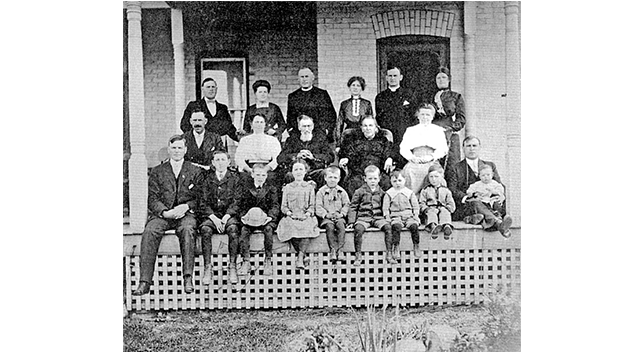
Conclusion
This image of what are likely four knobkerries greatly influenced my direction for this project. The inaccurate description of these knobkerries in the Huron Missionary Museum collection records as “Club used for infanticide” epitomizes the damaging influence of colonial collections. Photograph by Remi Alie.
The goal for this series of blog posts was to illustrate that many institutions like museums and universities exhibit colonial influence in their Indigenous collections. I conclude that these institutions can begin to heal the harm caused by their involvement in colonialism by researching their collections and engaging in the repatriation process. Huron University’s remaining Missionary Museum collection stands as an example of the colonial legacies of early archaeologists as actors of empire. I use this collection as a backdrop to analyze colonial collections at public institutions. In aiming to repair their colonial legacies, institutions should begin the process of repatriation. I stress that repatriation is about more than just returning objects to the people they came from. It takes many forms like researching the collection, providing wider access to information about the collection, extending partnership and agency in the collection, and loaning collections to communities.
Repatriating incorporates more opportunities for repairing the damages caused by colonialism than solely the return of artifacts to source communities. Additional means of repatriation lessen the barriers institutions face when considering decolonization. In “Repatriation in university museum collections: Case studies,” Jordan Jacobs, the Policy & Strategy Advisor, Office of the Vice Chancellor for Research at Cambridge University, and Benjamin W. Porter, associate Professor of Archaeology at California University, argue that repatriation should be a common occurrence rather than an extraordinary circumstance for museums to undertake. Furthermore, they argue that, in addition to the physical return of objects, successful repatriation can be the “sharing of actionable information with potential recipients.” [1] Viewing repatriation as a normal operation for an institution with a colonial legacy is an important aspect of increasing willingness to begin repatriation. Further increasing the potential for repatriation is an awareness of repatriation as more than solely the return of objects to their communities. Returning objects is, of course, an immensely important part of repatriation. But research increases knowledge about the artifacts and can thus lead to more opportunities for the proper repatriation of objects. With institutions like Huron University where the remaining database lacks proper information about the collection, researching the objects could help identify aspects such as potential source communities, the meanings of the objects for a source community, or historical uses of the objects. For example, in researching the supposed “Club used for infanticide,” I found that many East African communities used clubs called knobkerries as weapons for hunting and occasional warfare. Thus, the clubs were not designed for infanticide and their proper name is knobkerrie. With this completed research, the database now provides more accurate information about the artifact.
To wrap up this series, I want to push colonial institutions to begin the process of repatriation. This is possible through a variety of methods, but researching collections is a significant first step. There are many ways they can go about this process. For example, have students or employees respectfully interact with the objects and research their histories, fund research grants to hire students or professionals to research the collection, and reach out to Indigenous communities for their object knowledge. It is through research that museums and universities can better understand the meanings of their colonial collections and thereby enact proper repatriation if source communities choose to explore the return of their objects.
[1] Jordan Jacobs and Benjamin W. Porter, “Repatriation in University Museum Collections: Case Studies from the Phoebe A. Hearst Museum of Anthropology,” International Journal of Cultural Property 28, no. 4 (2021): pp. 531-550, https://doi.org/10.1017/s0940739121000400, 533.

